Interview with artist Linda Williams Palmer
Linda Williams Palmer grew up in Oklahoma where she discovered her love of nature and especially trees. After moving to Arkansas in the early 1980’s, Linda eventually began drawing full time. Her work is part of numerous private and corporate collections across the country. Her The Champion Trees of Arkansas series resulted in an Arkansas PBS documentary “Champion Trees" that has won state, national and international awards. The documentary continues to show on PBS stations throughout the United States. Her book, "The Champion Trees of Arkansas: An Artist's Journey" published by the University of Arkansas Press is now in its second printing. More of Linda’s work can be found at Justus Fine Art Gallery in Hot Springs, Arkansas and at her website lindawilliamspalmer.com.
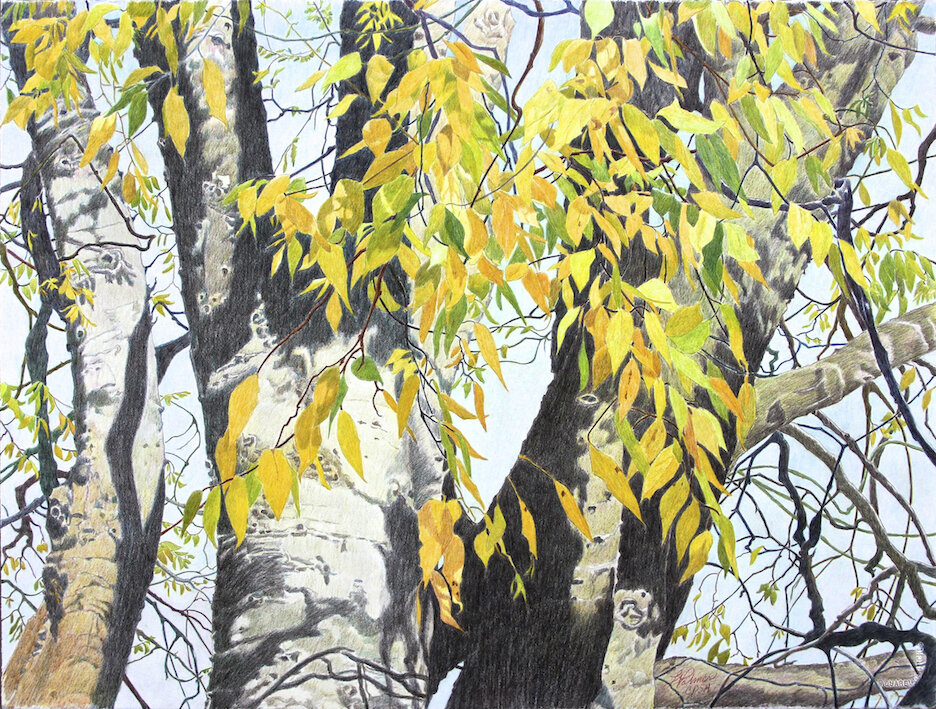
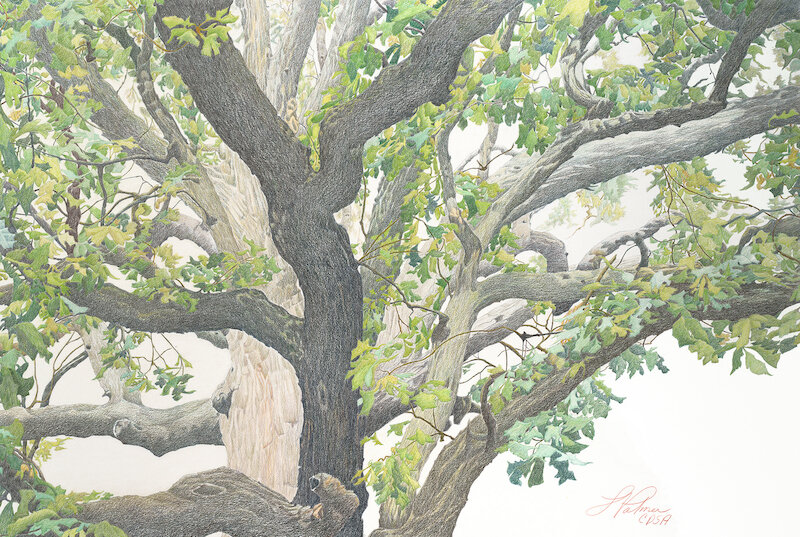
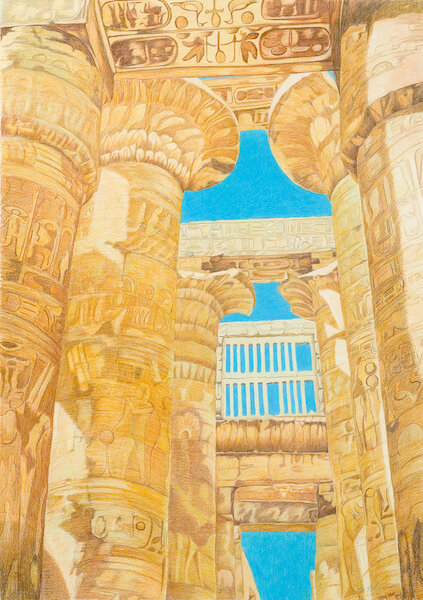
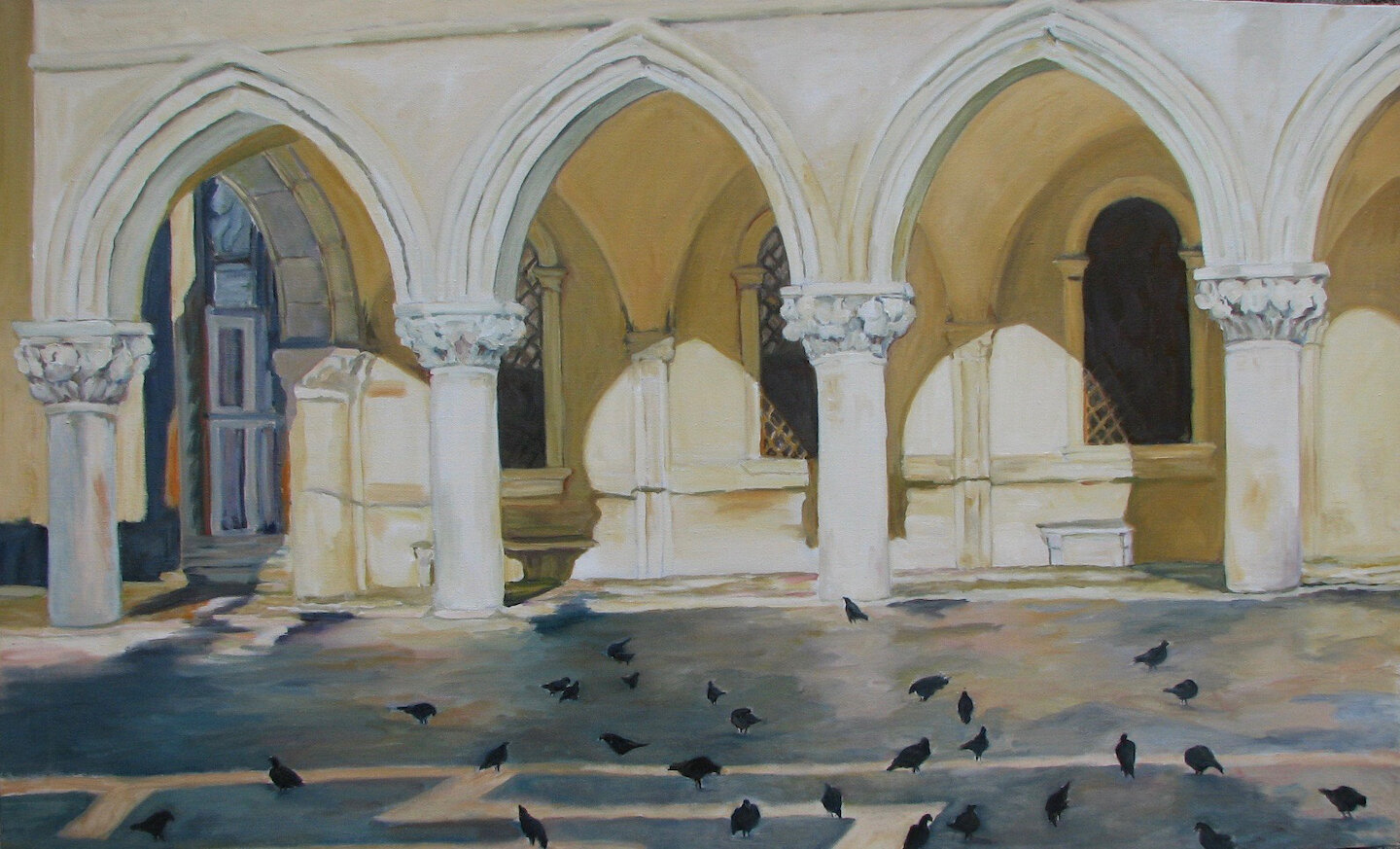
AAS: Linda, I believe you are originally from Oklahoma? How did you end up in Arkansas?
LP: I grew up on a farm in Oklahoma 5 miles from the nearby town of Checotah, Named for Chief Samuel Checote of the Creek Nation. I married a young man from Checotah, and we moved to Fort Smith, AR where he had started a housing development a few months before. We lived there for 25 years and had four wonderful children. I loved Fort Smith and had many friends there, but a few years after our divorce, I decided to move to Hot Springs, AR. The artist known as Benini and his wife Lorraine had their home and gallery in the building in the 500 block of Central Avenue. The gallery was then known as the ARTFOUNDATION. They invited me to exhibit my art in their gallery and to participate in the new Hot Springs Gallery Walk. About 15 years ago they moved to Texas and have now established The MuseoBenini in Marble Falls.
I met and was welcomed by the artists and gallery owners and before I knew it, I had bought one of the old empty buildings on Central Avenue. My new adventure had begun!
AAS: When did you discover your love of the outdoors and especially trees?
LP: My love of the outdoors began at the young of five or six. I grew up playing outside and always ended up playing in the area in front of our house we called “the woods”. I can’t remember when I didn’t appreciate the beauty of nature surrounding me. Trees especially fascinated me because I could feel their comforting presence and just knew they were magical even at that young age. No wonder trees have a special place in my art. We moved from that farm when I was 12 years old, but that experience has stayed with me my whole life.
“Trees especially fascinated me because I could feel their comforting presence and just knew they were magical…”
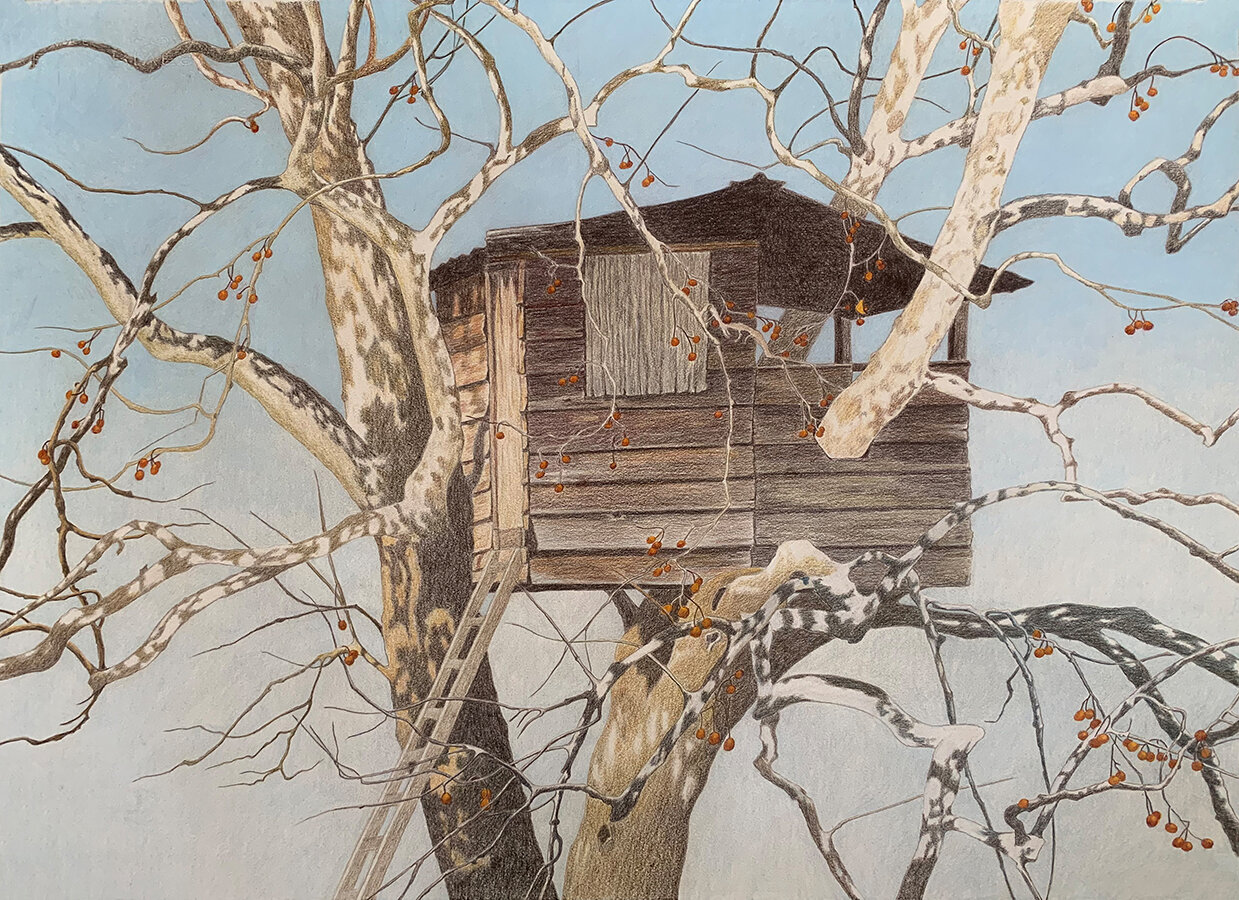
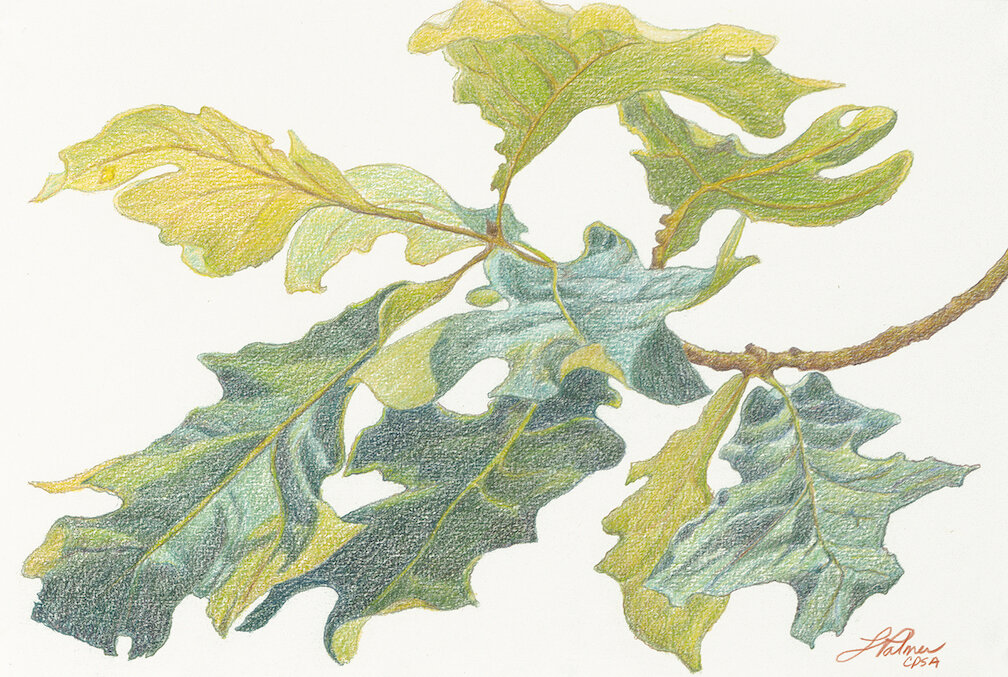

AAS: Would you talk about your ‘journey’ to document the special trees of Arkansas in your Champion Tree series? The book that resulted must have been exciting to produce.
LP: My Champion Tree Journey began with a letter from a lady telling me about a beautiful, giant tree. She explained it was a landmark of Keo and she just knew I would want to visit it and perhaps create a drawing of it. It was just as wonderful as she said and I was later telling a friend about it and she said if it was that big and beautiful, it must be on the Champion Tree List. I had never heard of the list and was excited when she told me how to pull it up on the Arkansas Forestry Commission’s website. That tree not only was on the list but was among the largest ones. As I looked over the list and saw all the big trees listed and their locations, I knew immediately I wanted to see more of them, take photographs, return to my studio, and create drawings.
I spent the next five years travelling around the state of Arkansas photographing and creating large drawings of these magnificent trees. I stopped keeping track of my mileage when I reached 20,000 miles. I started out just thinking of this as art inspired by nature, but after exploring the state and meeting and hearing the history of the trees and their owners, I realized it was also history. Many of the trees are in historic cemeteries, parks, forests, or community landmarks.
I also started speaking to different groups about the trees and telling their stories with a PowerPoint program (I have now spoken to 45 different groups so far). After speaking, people would ask me when I was going to write a book and tell about all these experiences. I finally thought it might be something I could do, since I had kept notes about the trips and even had professional images of my drawings. I asked a friend Denise Parkinson, a talented writer to help me and we submitted the final draft and photos to the University of Arkansas Press. To my surprise, they loved it and agreed to publish Champion Trees of Arkansas. The book was so much fun, because I relived all the experiences I’d had as I was writing it. The book is now close to the end of its second printing and still in demand.
AAS: You have been recognized with so many awards including Signature Status of the Colored Pencil Society of America. Has the colored pencil always been your medium of choice?
LP: I received signature status from the Colored Pencil Society of America quite a few years ago. A member must have had three drawings accepted in an annual competition within a 5-year time. One can then sign CPSA under their signature. I’ve always loved to draw with any kind of pencils and like the feel and look of works on paper. Another artist told me about Prismacolor pencils years ago when I wanted to add color to my pencil drawings. At that time few artists were using them as a medium, so I experimented with them and developed my own style and method. The pencils are soft, and wax based and can be applied from light to very dark. They are transparent and by adding color over color wonderful natural colors can be achieved. I decided to use these pencils for my Champion Tree Series because of this and the fact I could get the detail in the trunks and leaves I desired. The one drawback is you just can’t erase without ruining your drawing.
Shortleaf Pine, 55” x 38”, colored pencil on paper
AAS: Linda, let’s talk about some of your drawings. Many of them are drawn using an upward perspective, which I think really delivers a majestic feel to the trees. Shortleaf Pine and Ginkgo are beautiful examples.
LP: I like to get up close to a tree, touch the trunks and look up into the branches. The majesty and mystery of the trees can be better felt this way. The negative spaces are usually filled by the sky and present many different compositions, and this always inspires me. The Shortleaf Pine wasn’t interesting just viewing it straight on, but as I stood under it and looked up it was suddenly a different story. I was reminded of Georgia O’Keeffe’s iconic painting, “The Lawrence Tree”. The trunk of the pine was also filled with many colors and shapes and was really fun to draw.
I wanted to feature the trunk of the Ginkgo tree because it was so old and gnarled. You could feel the years that had passed around it. I was also drawn to it because of the golden colors of the leaves and their unique shapes.
Ginkgo, 22” x 30”, colored pencil on paper
AAS: Are there any particular artists other than Georgia O’Keeffe who have inspired you?
LP: My art classes at what is now the University of Arkansas Fort Smith with Don Lee and Pete Howard were the beginning of a new life for me. Suddenly it felt as if doors opened and I knew as much as I loved music, visual art was what I wanted to pursue the rest of my life. Studying Art History gave me an appreciation of many artists, but the one that stood out to me at that time was Georgia O’Keeffe. Her art and her personality were strong, clear, majestic and inspiring. I also love the beautiful compositions in the paintings of Gustave Caillebotte. Milton Avery, Will Barnet, Whistler, Fra Angelico, and the lithographs of Grant Wood are some of my favorites. I also admire the art of Wolf Kahn, a contemporary artist. His paintings and pastels are wonderful examples of a master colorist. As I look at my art library, the list could go on and on.
AAS: Your Flowering Dogwood is one of my favorites and has an ethereal quality. Would you talk about that piece and how you achieved that effect?
Flowering Dogwood, 30” x 42”, colored pencil on paper
LP: Flowering Dogwood is the only tree I drew only using graphite pencil with a tiny bit of color on the tips of the flowers. I saw it this way in my mind from the beginning. It was such a perfect tree in every way. The shape of the tree was perfect, and the flowers were full and throughout the tree. The negative spaces between the branches were like an abstract puzzle. All I had to do was draw it as it was. I thought of the beautiful oriental drawings I’ve seen as I was working on it, and I think that was the inspiration for me.
AAS: Your Cherrybark Oak tryptic is spectacular. Would you talk about that piece and its significance?
Cherrybark Oak, 23” x 8”, 23” x 15”, 23” x 8” (triptych), colored pencil on paper
LP: I have to admit, the Cherrybark Oak is a favorite tree of mine. It truly is one of the most beautiful trees on the list. It stands alone in a pasture and so has not been crowded in as it has grown. Its shape is perfect and the large limbs curve almost down to the ground. The leaves are large and very colorful in the fall, so of course, that’s the time of year I decided to draw it. I’ve used the triptych style in many of my tree drawings, as I think it leads the viewing eye outward from both sides. I think of my tree drawings as tree portraits as I try to capture the essence and the special features of each tree.
AAS: When I look at Entangled, I see a rhythm and almost a dance. Do you think your training in music has influenced your style of drawing?
Entangled, 21” x 29.5”, colored pencil on paper
LP: Entangled is one of my earlier works and is one I keep in my private collection. I started it after a walk in the winter woods on our farm. Anyone who hikes in the Arkansas woods in the winter can easily be tangled up in the vines that grow under the trees. The large trees on the hillside do seem to dance together with the vines. That walk was a special time for me that I want to remember. I usually listen to music when I’m working. My work is usually quiet and still but with movement. Therefore, my music is often classical piano or soft jazz. I also like to hear the sound of beautiful voices in any genre. A great guitar riff is always good to add a little energy when I need it.
AAS: Is there any special care required for displaying pencil drawings on paper?
LP: Yes. Colored pencil art on paper should be treated as you would a fine watercolor on paper. Never hang it in strong sunlight or in a moist environment. I always use 100 percent rag paper for my drawings. Drawings on paper must always be backed with acid free backing and matted with acid free mats. I also spray the finished drawing lightly with a spray for added protection from smearing and from light. A UV protectant glass or acrylic cover over the drawing when framing is also good.
AAS: You owned galleries in Fort Smith and Hot Springs for many years. What was that experience like?
LP: I’ve been fortunate to have the experience of owning a gallery while also working in my studio as an artist. I’ve contacted galleries in the hopes they would represent my work and been a gallery owner deciding whether I would include an artist’s work in my gallery. I’ve celebrated with an artist when I’ve placed their art with an admiring collector and been encouraged when a gallery has done the same for me. A gallery owner works with both the public personalities and the artists personalities. The gallery also has an almost 30 percent overhead, so when they ask for a 50/50 percent commission from the artist this doesn’t leave a lot of room for profit. Artists have expenses they have to cover in the pricing of their art also, especially if they have high framing costs. All this needs to be worked out between the two to arrive at the pricing of the art. It truly is a partnership and can be rewarding for both. I have now, after 30 plus years, retired from the gallery business. I love having more time to work in my new home studio and am fortunate my art is being represented by the Justus Fine Art Gallery in Hot Springs.
AAS: What are you working on now, Linda?
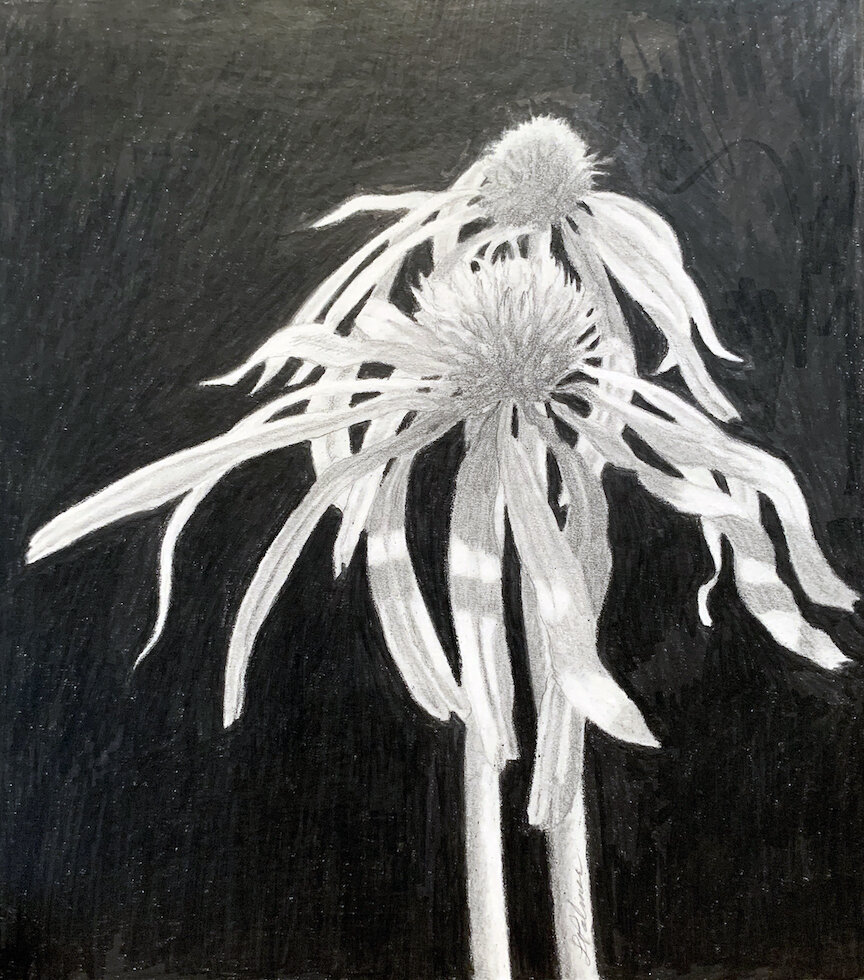

LP: During COVID last year I started doing small flower drawings while staying in. The black and white art is a revisiting of working in a medium I've always enjoyed. The tulips are from my photos taken in Garvan Woodland Gardens and the purple coneflowers from my garden. The background is made up of 2 coats of the darkest graphite pencil with another 2 coats of Prismacolor pencil Black over that on a heavy acid free board. The flowers are graphite pencil and shaded with drawing stumps.
I am still documenting trees and just finished a private commission of an amazing tree around Lake Village. It is now being framed and will soon be delivered. I've also noticed a new Champion Tree that has been designated here in Hot Springs that I want to start on. However, I do want to pick up my oils again and have other ideas and subject matters to explore in the future. The problem with most artists and myself included is not finding something to paint but deciding on the many possibilities we have before us.



